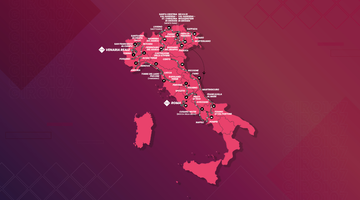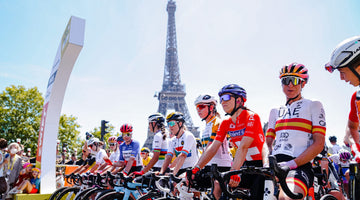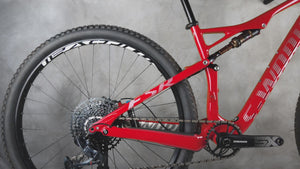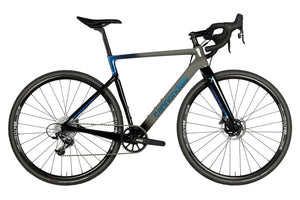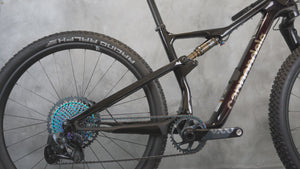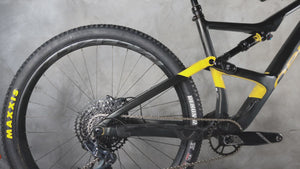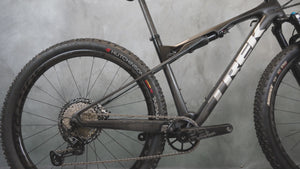What to eat before, during and after a cycling trip?
In this Article
Published on 24 October 2024
While some cyclists have a firm grasp on what to eat before, during, and after a bike ride, for others, it can be a bit more complex. Nutrition and hydration are two essential factors for any good bike ride, whether in training or competition, and neglecting them is a mistake. At high or low intensity, cyclists do not burn only fat; they also consume carbohydrates. Therefore, a minimum intake of carbohydrates is crucial to better manage training and maintain a more consistent power output over time. How can you eat well before, during, and after a bike ride? The Cyclist House shares some tips with you.

Source: Wundervisuals
What to eat before a bike ride?
It all starts with breakfast, a key meal to optimise your performance. Before training, it is essential to consume a meal rich in low glycaemic index (GI) carbohydrates, to release energy gradually throughout the session.
Breakfast will provide you with all the micronutrients you need. It should be easily digestible and not cause any gastric discomfort.
Examples of recommended breakfasts
- Consider a savoury breakfast with eggs, chicken breast, and vegetables. You may add one or two starchy foods, but avoid whole grains (like wholemeal pasta or rice) to prevent digestive issues. This type of breakfast is also fattier.
- If you prefer a sweet breakfast, opt for oatmeal mixed with dried fruits that have a low glycaemic index. You can enhance it with a few chocolate chips for a treat. The sugar injection will be more gradual over time. You can complement this porridge with a fried egg if the bike ride is long.
- If you prefer to save time, a sports breakfast is also an excellent option, such as energy cream or Gatosport, which are easy to digest and have suitable nutritional values.
Although not always essential for endurance rides in zone 2, a carbohydrate refill is particularly recommended if you anticipate intense efforts or intervals. This helps reduce fatigue and can improve your performance by 2 to 3% for efforts exceeding 90 minutes.
If the ride takes place in the morning, the ideal is to have your breakfast 1 to 1.5 hours before. Sometimes longer, depending on the intensity of the effort ahead. In the hour leading up to the effort, opt for high-GI snacks that are easy to absorb and reduce fibre intake.
Then, 30 to 90 minutes before the race, it is preferable to consume a snack rich in higher GI carbohydrates, such as a banana. However, the timing and choice of foods depend on personal preferences and intestinal tolerances.
And what to avoid eating before a bike ride?
To properly fuel your body, as you've understood, choose foods rich in carbohydrates that are easy to digest. Two to four hours before your ride, limit the intake of foods known to cause digestive issues, such as:
- High-fibre foods like wholemeal bread;
- Fatty foods such as pastries or creamy sauces;
- Spicy dishes to avoid the risk of burning;
- Excessive caffeine;
- And alcohol, which will promote dehydration.
Of course, the same applies to the previous evening's meal. Even if fondue Savoyarde with white wine is always enjoyable, it might not be well-received the next day 😉

What to eat during the bike ride?
Consume enough carbohydrates
For a standard training session, it is generally recommended to consume between 30 and 60 g of carbohydrates per hour, which will allow you to sustain yourself throughout the ride and recover better afterwards. However, this amount varies depending on the session and intensity. If you are riding at a more moderate intensity, for example, doing tough intervals or during a race lasting more than 2.5 hours, you may need to aim for 80 g or up to 120 g of carbohydrates per hour, depending on your body weight.
For comparison, a pro cyclist can assimilate between 90 and 120 g of carbohydrates mixed with fructose per hour to perform at 100% of their capacity.
Balance glucose and fructose
Speaking of fructose, it is indeed advisable to favour a glucose/fructose balance. The products you consume should have slightly more glucose than fructose, but both are essential for better carbohydrate absorption and longer performance. By combining these two sugars, the overall absorption rate increases.
Glucose and fructose use distinct absorption pathways, and their combination helps circumvent the limitations specific to each transporter. This ensures increased energy availability during exertion, a key factor in maintaining performance in endurance sports.
For example, we can mention cassava maltodextrin drinks that are ideal during long efforts. Easy to digest, they do not have a sweet taste, making them less sickly.
Vary your choices
In terms of food, eat what you enjoy and vary your choices to store the maximum energy.
Alternate gels, bars, sweets, and iso drinks. Energy gels and sports drinks can be practical sources of concentrated carbohydrates for long rides, helping to maintain blood sugar levels and performance. They typically contain 20-25 g of rapidly digestible carbohydrates (sucrose, fructose, glucose, or maltodextrin) and sometimes caffeine or electrolytes. A gel provides around 45 minutes of energy, but they should be spaced 45-50 minutes apart and taken with water, not a sports drink, to avoid excess sugar and ease digestion.
Obviously, before a competition, do some testing. Don’t experiment with your nutrition on race day.

Be consistent
Regularly hydrate every 15 to 20 minutes and fuel every 45 minutes or so. Depending on the intensity and temperature, you may need to adjust this slightly.
The mistake to avoid at all costs is overeating at once or waiting until the last moment. When hypoglycaemia strikes, it’s too late. The secret? Eat in a spaced manner, but regularly throughout the ride. Set these rules to keep yourself in good shape.

You can absorb carbohydrates for up to 8 hours during a bike ride. Beyond that, you can supplement this intake with proteins, but it is not mandatory.
Drink enough
Hydration consists of two elements: the total amount of water to consume and the electrolytes to incorporate as a supplement. A decrease of more than 2% in body weight is often regarded as the threshold at which performance begins to be seriously affected. Therefore, it is crucial to ensure you do not exceed this loss during your rides and to drink regularly.
Generally speaking, it is important to drink plenty the day before and the morning of the training. This ensures you are well hydrated and prepares your body for the effort ahead.
And finally, what to eat after cycling training?
After a long ride, opt for a healthy meal combining lean protein and carbohydrates to replenish your stores without adding fat. You can include:
- fruits and vegetables (for their vitamin and mineral content) to rehydrate properly;
- starchy foods (to replenish glycogen stores);
- lean meat or fish (for muscle repair);
- a dairy product.

However, post-ride nutrition is highly individual, and each cyclist has their dietary habits. But remember, it allows you to recover and, most importantly, progress faster.
More protein or more carbohydrates for post-ride recovery?
Both carbohydrates and proteins are essential for optimal recovery after exercise. Carbohydrates serve as the body’s primary fuel, being stored as glycogen in the muscles and liver. After exertion, these stores are depleted and need to be replenished before the next ride.
Moreover, intense training causes the breakdown of muscle tissue, which is made up of proteins. Consuming protein after exercise provides the amino acids necessary to stimulate muscle repair and growth. This also helps reduce soreness the following day. For optimal recovery, around 20 g of protein is recommended after an intense session.
The best time to eat after cycling
The ideal time to eat after a bike ride is between 30 minutes and an hour after the effort. This is when the body is most receptive to the nutrients it needs to initiate the recovery and muscle repair processes.
Find more pro tips for an effective bike ride.
In summary, eating well before, during, and after a bike ride is essential for optimising performance, avoiding energy slumps, and promoting good recovery. We've all experienced that energy crash during a ride, and it's simply because we didn't anticipate our body's needs sufficiently. So, don't wait until you're thirsty or hungry to pull out a bar. However, each cyclist is unique, and it is crucial to adapt these recommendations to your own needs, tolerances, and goals.
Cédrine Kerbaol, European champion in the 2023 mixed relay time trial, shares some dietary practices she has encountered since her beginnings, and above all, the notion of pleasure in food. Because if happiness is on the bike, it’s also on the plate...🙂














